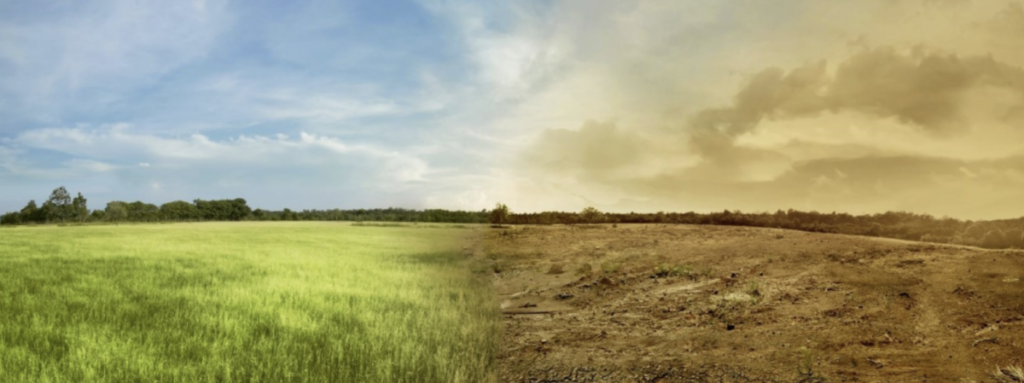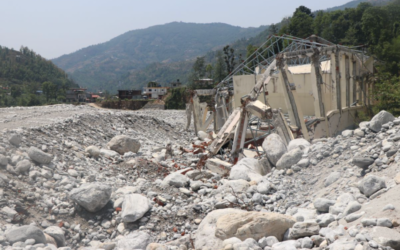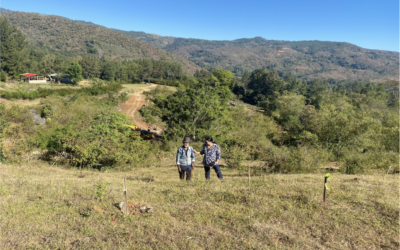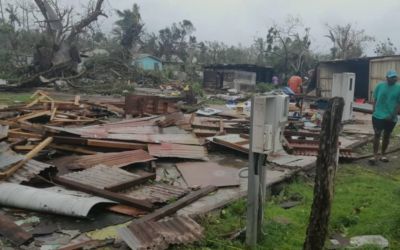Priyanka Gurung | 9 November 2022

A lived reality
“I lost my own son in this water a few days ago” (Mansoor, 2022). “Before the floods, we were busy farming and earned a decent living, but now, we have lost everything except our lives,” she said. “We are depressed and really worried about our losses.” (Afzal, 2022). These are the views of families affected by the worst flood that struck Pakistan in June 2022. This is a stark reminder of the reality being faced globally but more prominently in the Global South, as climate-induced disasters become more frequent and extreme claiming not only homes and incomes but also loved ones in the family. Vulnerable communities in the least developed countries, who are barely responsible for contributing to climate change have been in the most peril, indicating a clear case of climate injustice.
Countries in South Asia in recent months have suffered and continue to suffer from extreme weather events. From the recent drought in Sri Lanka, ongoing sea level rise in Bangladesh, recent extreme heat waves in India to the 2022 devastating floods in Pakistan, all make it evident that the region is facing serious loss and damage associated with climate change. One study (Markandya & González-Eguino, 2019) predicted that the economic cost of loss and damage that will be sustained by developing countries is US$290 – 580 billion which is estimated to rise to 1 – 1.8 trillion by 2050. In South Asia alone, the cost is estimated at US$518 billion by 2050, increasing to US$997 billion by 2070 (Markandya & González-Eguino, 2019). However, much of the loss cannot be quantified into numbers such as human lives, cultural heritage, traditions, biodiversity, and many more. So, the losses are much higher than the projected number and will be felt for years.
Understanding Loss and Damage (L&D)
As disasters intensify and become frequent every year, it has become evident that vulnerable communities will find it extremely difficult to recover from these inevitable consequences. The term “loss and damage” is used in climate negotiations to highlight the inevitable impacts of climate change that countries could not adapt to. It not only refers to impacts from extreme weather events such as floods but also from slow-onset events such as sea level rise. In recent years, we have continuously seen, heard, and experienced climate disasters which have claimed thousands of lives and damaged billions worth of property. This indicates that while adaptation and mitigation efforts are important in minimizing impacts for the future, it cannot prevent the losses and damages we face right now. Vulnerable countries lack sufficient resources to deal with such catastrophic disasters and have limited capacity to cope with their impacts.
Global L&D response
In global climate policy debates, it is good to see increasing recognition of the need for funding mechanisms to address climate change related loss and damage. More recently, L&D has emerged as a third pillar of climate policy response (along with the existing two pillars: mitigation and adaptation) to directly address loss and damage from climate change. However, there are still several misunderstandings surrounding the subject. As L&D is directly tied with finance, there is a need to have proper clarity regarding the financial requirements of vulnerable countries to move forward. However, the provision of a concrete L&D financing mechanism continues to be delayed by the conflicting positions of the developing and developed countries. While developing countries strongly advocate for L&D finance facility (LDFF), no agreement has been reached on this between the developing and the developed countries.
There is a lack of agreeable framework between the developed and developing countries to initiate Loss and Damage financing. In COP26, UNFCCC parties agreed on hosting the Glasgow dialogue over the next two years to discuss ways of delivering finance to address loss and damage. However, the developing countries find this too slow, making it extremely difficult to advance L&D response. As stated by Prof Saleemul Huq “From the perspective of vulnerable communities and vulnerable countries, COP26 failed to deliver finance for loss and damage” (UN Climate Change – Events, 2022).
COP26 has sent some good signal. Though small in amount as compared to the current and projected loss and damage, Scottish government contributed £2 million to address loss and damage — which was further supported by the financial commitments of five philanthropies and the government of Wallonia, Belgium (Schalantek & Roberts, 2021). This is encouraging but it is important to realize that the loss is in the order of billions.
The way forward
While current advocacy related to loss and damage finance is based on climate reparations, we support the middle ground of “solidarity”. It is critical for countries to muster courage and enthusiasm needed towards solidarity as it is only then that the climate crisis can be properly tackled. As stated by Prof Saleemul Huq “as part of the Paris agreement, developing countries have agreed not to invoke liability or claim compensation as part of the Paris Agreement. The opportunity now exists for the developed countries to offer funding out of a sense of solidarity rather than compensation.” (Huq, 2021). Now it is time for the developed countries to do their part in showing solidarity and compassion.
The success of COP27 will entirely depend on how we address loss and damage. Our discussions and actions must be built on the absolute necessity to address climate injustice. For this, every country must stand in solidarity and support the delivery of the much-needed loss and damage finance facility. This show of solidarity is one step towards climate justice, which is crucial now more than ever, as we move towards years of even more frequent and catastrophic climate disasters. It is important to realise that the longer we wait to seek clarity on the understanding of L&D instead of taking concrete steps to advance it, the costlier it is going to be for vulnerable countries.
References:
Afzal, J. (2022, October 5). The hidden victims of Pakistan’s floods – the elderly. Al Jazeera. https://www.aljazeera.com/opinions/2022/10/5/the-hidden-victims-of-pakistans-floods-its
Huq, S. (2021, August 4). The era of loss and damage from climate change is upon us. The Daily Star. https://www.thedailystar.net/opinion/politics-climate-change/news/the-era-loss-and-damage-climate-change-upon-us-2144111
Mansoor, S. (2022, September 22). ‘I lost my son in this water a few days ago.’ photos of Pakistan’s catastrophic flooding. Time. https://time.com/6215096/pakistan-flooding-photos/
Markandya, A., & González-Eguino, M. (2018, November 29). Integrated Assessment for Identifying Climate Finance Needs for Loss and Damage: A Critical Review. Loss and Damage From Climate Change, 343–362. https://doi.org/10.1007/978-3-319-72026-5_14
Schalatek, L., & Roberts, E. (2021, December 16). Deferred not defeated: The outcome on loss and damage finance at COP26 and next steps. Heinrich-Böll-Stiftung. https://us.boell.org/en/2021/12/16/deferred-not-defeated-outcome-loss-and-damage-finance-cop26-and-next-steps
UN Climate Change – Events. (2022, June). Glasgow dialogue : What happened and what next for l&d finance [Video]. YouTube. https://www.youtube.com/watch?v=OFjxikuPTsU&t=359s




